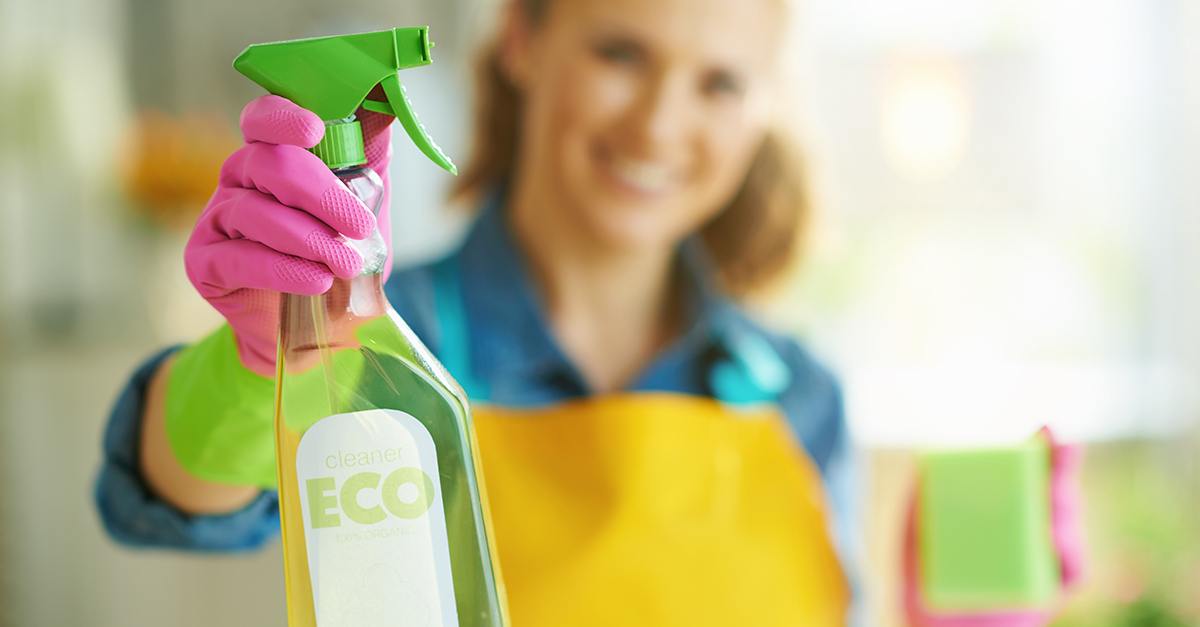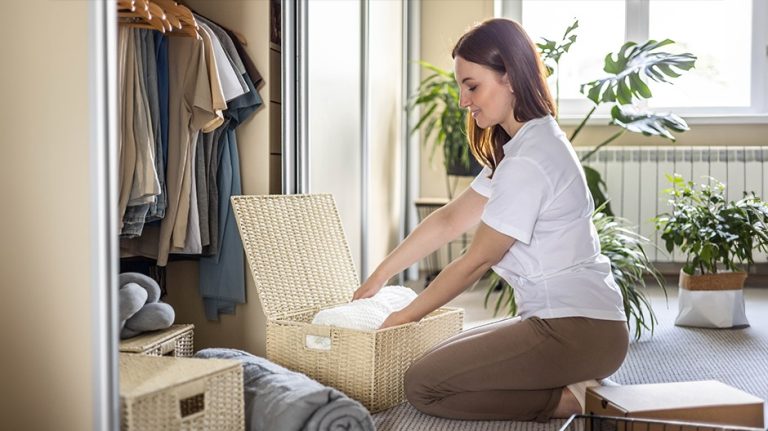As awareness around environmental issues continues to rise, people are increasingly seeking sustainable and eco-friendly alternatives in all aspects of life. One area where significant changes can be made is in cleaning and maintenance. Traditional cleaning methods often rely on harsh chemicals that not only harm the environment but also pose potential health risks. However, eco-friendly cleaning doesn’t mean compromising on cleanliness or effectiveness. In fact, it’s entirely possible to maintain a clean, organized, and sanitary home using natural, non-toxic products that are gentle on the environment.
If you’re new to eco-friendly cleaning and maintenance, it can feel overwhelming to make the shift. But with the right tools and a bit of knowledge, anyone can create a healthier and more sustainable cleaning routine. In this guide, we’ll explore practical tips, simple alternatives, and the essential mindset to help you transition to an eco-friendly way of maintaining your home.
Why Choose Eco-Friendly Cleaning?
Before diving into the specifics, it’s important to understand the reasons behind the growing movement toward eco-friendly cleaning and maintenance. Traditional cleaning products often contain chemicals such as chlorine, phthalates, and ammonia, which can be harmful to both your health and the environment. These chemicals can linger in your home, affect indoor air quality, and even pollute water sources when washed down drains.
Eco-friendly cleaning products, on the other hand, are typically biodegradable, non-toxic, and made from natural ingredients. They not only reduce the chemical load in your home but also promote sustainability by using fewer synthetic materials and reducing packaging waste. Choosing eco-friendly alternatives helps create a cleaner, healthier environment both inside your home and in the world at large.
1. Start with Simple DIY Solutions
One of the most rewarding aspects of transitioning to eco-friendly cleaning is that many effective solutions can be made right at home with common ingredients you probably already have in your kitchen. Here are a few essential DIY cleaning recipes that every beginner should know:
All-Purpose Cleaner: Mix one part white vinegar with one part water in a spray bottle. Add a few drops of essential oils such as lavender or lemon for a fresh scent. This solution can be used for countertops, sinks, and other surfaces.
Glass Cleaner: Combine one cup of water, one cup of vinegar, and a tablespoon of cornstarch. This solution works wonders for leaving your windows streak-free and sparkling.
Bathroom Cleaner: A simple paste made of baking soda and water can be used to scrub sinks, tubs, and toilets. Add a few drops of tea tree oil for its natural antibacterial properties, which are especially useful in the bathroom.
Disinfectant: To make a natural disinfectant, mix one cup of rubbing alcohol (isopropyl alcohol), one cup of water, and a few drops of tea tree or eucalyptus oil. This can be used to disinfect high-touch surfaces such as doorknobs, light switches, and countertops.
2. Embrace Reusable Cleaning Tools
In the world of eco-friendly cleaning, one key principle is reducing waste. Disposable cleaning products such as paper towels, single-use wipes, and plastic scrubbers contribute significantly to landfill waste. By switching to reusable cleaning tools, you not only reduce your environmental impact but also save money over time.
Microfiber Cloths: Microfiber cloths are highly effective for dusting, wiping down surfaces, and cleaning windows. Unlike paper towels, they trap dust and dirt particles without leaving streaks. They can be washed and reused countless times, making them an excellent investment for a sustainable cleaning routine.
Reusable Mops and Brooms: Instead of using disposable mop pads or dusters, opt for reusable versions. Many eco-friendly mops come with washable pads that can be removed and cleaned after each use, and brooms with replaceable heads, reducing plastic waste.
Sponges and Scrubbers: Choose sponges made from natural materials such as cellulose or coconut fibers instead of synthetic sponges. These eco-friendly scrubbers are biodegradable and work just as well as their plastic counterparts.
3. Opt for Natural, Plant-Based Products
When purchasing cleaning products, it’s important to choose those made with natural, plant-based ingredients. Look for certifications such as Green Seal, EcoLogo, or the EPA’s Safer Choice label, which indicate that a product has been independently verified as environmentally friendly.
Many eco-friendly cleaning brands use ingredients like citric acid, essential oils, and plant-derived surfactants to clean effectively without the use of harsh chemicals. These products are just as effective as traditional cleaners but are far safer for both you and the environment. Brands such as Method, Seventh Generation, and Mrs. Meyer’s Clean Day offer plant-based cleaning products that come in recyclable packaging, further reducing waste.
4. Reduce Plastic Waste with Sustainable Packaging
Packaging waste is another issue to consider when making the switch to eco-friendly cleaning. A large proportion of the plastic used in cleaning products—whether for bottles, caps, or cleaning wipes—ends up in landfills or oceans. To minimize your plastic consumption, look for cleaning products that come in recyclable or compostable packaging.
Another way to cut down on plastic waste is to use concentrated cleaning products. Many brands now offer concentrated versions of their cleaners, which you can dilute with water at home. These products come in smaller, more sustainable containers, reducing both packaging waste and the carbon footprint associated with transporting larger bottles.
If you’re feeling crafty, consider refilling old cleaning product containers with your own homemade solutions or purchasing concentrated eco-friendly cleaner refills. This simple step helps reduce single-use plastic and saves you money in the long run.
5. Adopt Sustainable Practices for Regular Maintenance
While cleaning is essential, maintenance plays a crucial role in reducing the need for frequent deep cleans. Maintaining your home regularly can help prevent dirt buildup, requiring less time and fewer cleaning products to maintain a spotless environment.
Here are a few eco-friendly maintenance tips:
-
Air Circulation: Use a fan or open windows regularly to improve indoor air quality and reduce humidity, preventing mold growth in bathrooms and kitchens.
-
Declutter: Keeping your home free from unnecessary clutter makes it easier to clean and lessens the need for frequent deep cleans. Donate or recycle items you no longer need instead of throwing them away.
-
Natural Air Fresheners: Instead of using aerosol air fresheners, which often contain harmful chemicals, consider using natural alternatives like essential oils, homemade potpourri, or plants known for their air-purifying properties (such as spider plants, peace lilies, and snake plants).
-
Energy-Efficient Appliances: Invest in energy-efficient appliances for your home, such as washers and dishwashers that use less water and energy. This will reduce your overall environmental impact.
6. Maintain Your Cleaning Equipment
Taking good care of your cleaning tools is crucial to extending their lifespan and ensuring they remain effective. Regularly wash microfiber cloths, mop pads, and reusable sponges to keep them in optimal condition. For vacuum cleaners, make sure to empty the dustbin and clean the filter regularly to maintain maximum suction power.
Additionally, when the time comes to replace cleaning equipment, opt for high-quality, durable products that are designed to last longer, rather than cheaper alternatives that wear out quickly and contribute to more waste.
Conclusion
Adopting eco-friendly cleaning and maintenance practices may seem daunting at first, but with the right mindset and a few simple changes, it can become second nature. By choosing natural, biodegradable products, reducing waste, and incorporating reusable tools into your routine, you’ll be contributing to a cleaner, greener world while maintaining a safe and healthy environment for yourself and your family.
Eco-friendly cleaning isn’t about perfection—it’s about making conscious, mindful choices that align with your values and the needs of the planet. By making small adjustments, you can take a significant step toward a more sustainable lifestyle, ensuring that your home is not only clean but also a reflection of your commitment to the health of the environment. The power to create positive change starts with you, and every eco-friendly choice you make brings us one step closer to a more sustainable future.















